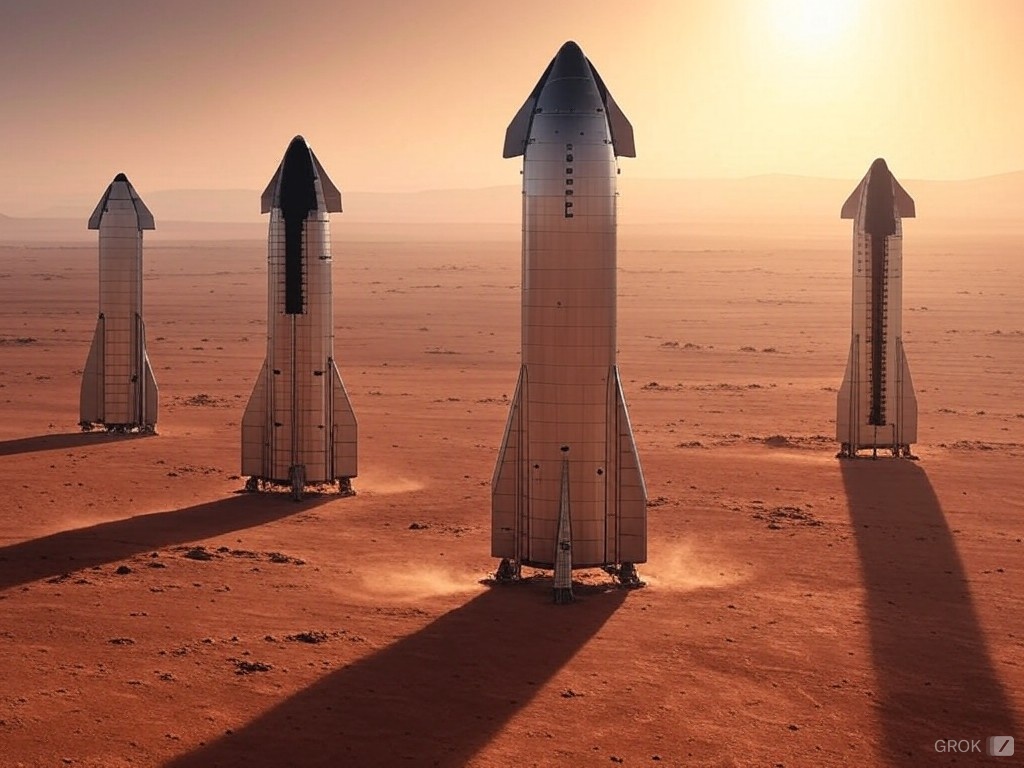SpaceX: Colonizing Mars with Starship – The Red Planet's Next Chapter
SpaceX's audacious goal of colonizing Mars is rapidly moving from ambitious dream to tangible reality, spearheaded by their revolutionary Starship spacecraft. This isn't just about planting a flag; it's about establishing a self-sustaining human presence on the Red Planet, a monumental leap for humanity. This article dives deep into SpaceX's Starship program, its challenges, and its potential to reshape our future amongst the stars.
Starship: The Vehicle of Martian Dreams
Starship, a fully reusable, super heavy-lift launch vehicle, is the cornerstone of SpaceX's Mars colonization plans. Its massive size and power are crucial for transporting substantial payloads – including humans, equipment, and vital resources – across the vast expanse of space.
Key Features of Starship:
- Fully Reusable: Unlike previous rockets, Starship is designed for complete reusability, drastically reducing the cost per launch and enabling frequent missions to Mars.
- Methane-Based Propulsion: Utilizing methane and oxygen, Starship leverages in-situ resource utilization (ISRU) potential on Mars, meaning propellant can be produced on the planet itself, reducing reliance on Earth-based supplies.
- Massive Payload Capacity: Its immense size allows for the transportation of significant cargo, including habitats, equipment, and potentially even prefabricated Martian structures.
- Rapid Iterative Development: SpaceX's rapid prototyping and testing approach is accelerating development, learning from each flight test and iterating quickly.
The Challenges of Martian Colonization
While Starship presents a groundbreaking technological advancement, the journey to colonizing Mars remains fraught with challenges:
Technological Hurdles:
- Developing Reliable Life Support Systems: Sustaining human life in the harsh Martian environment demands sophisticated life support systems capable of recycling air, water, and waste.
- Radiation Shielding: Protecting astronauts from harmful cosmic and solar radiation during the long journey and on Mars' surface is a critical concern.
- Landing and Ascent: Successfully landing and launching a fully loaded Starship on Mars with its thin atmosphere requires advanced landing and propulsion technologies.
- ISRU Development: Successfully extracting and utilizing Martian resources for propellant and other necessities is essential for long-term sustainability.
Financial and Logistical Complexities:
- Enormous Financial Investment: The cost of developing and deploying Starship and establishing a Martian colony is astronomical, requiring significant private and potentially public funding.
- International Collaboration: A collaborative, international approach is crucial to mitigate risks and share resources effectively.
- Ethical Considerations: The ethical implications of altering the Martian environment and potentially introducing terrestrial life must be carefully considered.
The Timeline and Future Outlook
SpaceX aims for initial uncrewed missions to Mars within the next decade, followed by crewed missions later. The timeline, however, remains fluid and contingent upon successful development and testing of Starship. While challenges are abundant, the potential rewards are immense.
Potential Benefits of Martian Colonization:
- Expanding Humanity's Reach: Colonizing Mars represents a significant step towards becoming a multi-planetary species, mitigating the risk of extinction from Earth-bound catastrophes.
- Scientific Discovery: Mars holds immense potential for scientific breakthroughs, offering insights into planetary formation, the search for past or present life, and the potential for future resource extraction.
- Technological Advancements: The technological innovations driven by the pursuit of Mars colonization will have far-reaching implications on Earth, benefitting various industries.
Conclusion: A Giant Leap for Mankind
SpaceX's Starship program represents a bold step towards making the dream of Martian colonization a reality. While significant hurdles remain, the rapid progress and innovative approach of SpaceX offer a beacon of hope for humanity's future among the stars. The journey to Mars is a testament to human ingenuity and our unyielding curiosity – a journey that promises to redefine our place in the universe. Follow SpaceX's progress for further updates on this groundbreaking endeavor.
Keywords: SpaceX, Starship, Mars colonization, Mars, space exploration, reusable rocket, space travel, colonization, Red Planet, in-situ resource utilization (ISRU), space technology, future of space travel, Elon Musk, Martian habitat.
